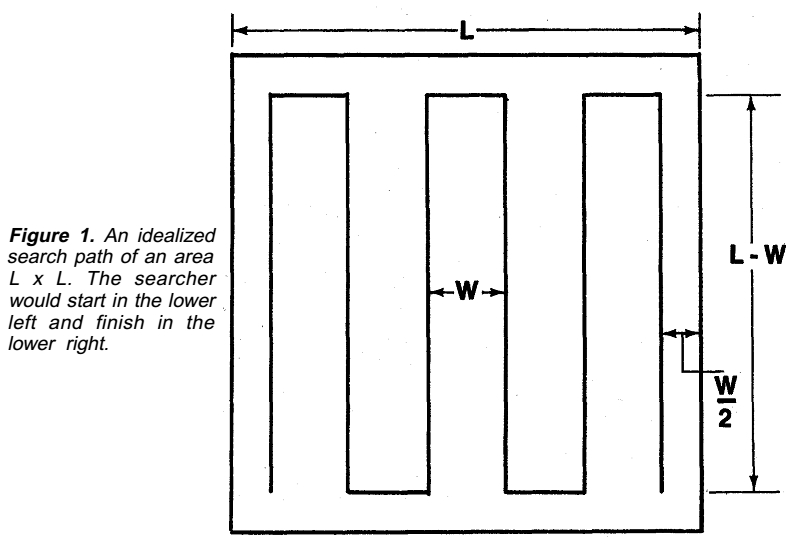by Karl Horak

by Karl Horak

| - | - | - | - | - |
| Dragon | - | - | - | Dragon 47 |
The Assassin had no choice but to
allow Balthrad to leave through the Gate
of Rith; he had sworn an oath upon his
alignment to not SLAY Balthrad.
Surely
Eroi the Kind-hearted, demigod of Elysium,
was watching them,
ready to destroy them should one raise his hand
against the other. Armando the <Priest>
then suggested, ďIs death for Balthrad
revenge enough? Let us find him and
sell him into slavery in the North. Assassin, with the power of your
<psychic ability> you
can place him in a trance, NOT to awaken
until you command.Ē So they agreed
that this they would do and the Assassin
told Armando to meditate and use his
powers to find the fugitive Balthrad.
<change Assassin to Bounty Hunter>
Within 30 minutes Armando was projected
astrally and seeking out
his quarry.
In the past I would have simply set an
arbitrary probability and rolled d%. But
the serious consequences of Balthrad
failing to hide from Armandoís astral
search deemed that I should be more
objective. How long would an astral
SEARCH of an AREA require and what
would be the chances of success?
The result of a few hours of geometry and
calculations provided some simple formulas
that can be applied to other cases,
revealed that Balthrad could evade an
"exhaustive" SEARCH easily, and pointed
out the limitations of large-AREA searches,
even when carried out astrally or [ethereally].
Armando enlisted the aid of Rith in
cordoning off the island that was the
lower terminus of the gate. Next he
quickly surveyed the surface of the island,
looking for places of concealment. Failing
that, he would conduct a SEARCH of
the various subterranean lairs, caves,
shafts, and tunnels.
One can derive a formula for the surface
SEARCH by idealizing the AREA to be
searched and the path to be covered as
in figure 1. If L is the length of the side of
the AREA to be searched (the square root
of the AREA) and W is the width of the
SEARCH path (W must be in the same units
as L, usually miles), then LP is the total
length of the SEARCH path. The formula is
the number of sweeps times the length
of each leg plus the sum of all the short
(connecting) legs:
![]()
Since L is many times greater than W
in most cases, one can substitute L for
(L-W), yielding:
![]()
Dividing LP by the speed of the searcher,
V, gives the Time, T, required for the
total SEARCH. Dividing by the number of
searchers yields the time per character.
DMís using the formula must remember
that values for L and W are to be set
by the player as he or she feels fit in
order to attempt the SEARCH. V and its
associated probability of success fall
into the domain of the DM. The simplified formula
should only be used in the
event that L is about 1,000 to 10,000
times larger than W, in order to keep
errors under a few percent. Depending
on the size of the SEARCH object (whether
single man or long ship), W will affect
the chances of success, as will V. For the
DM to get an idea about the interrelationships of the variables, let
us follow
through with the example from the first
paragraph.
In the case of Balthrad versus Armando, the surface AREA of the island
is 75
hexes, each 5 mi. across, for a total AREA
of 1624 sq. mi., so that L =40.3. The value
for W was set at 50 ft. A certain amount of
subjective judgement is unavoidable in
determining V. Astral travel is at the
speed of thought, yet the senses would
get only a confused muddle at such vast
speeds. Even when SPEED is reduced,
how much can a person sense when
moving rapidly? Let us assume that at 50
mph a person can detect the SEARCH object with a probability of 25%;
at 100
mph this probability drops to 10%; and at
over 200 mph the probability of recognizing a man-sized TARGET is only
1%
These probabilities can be changed to
suit the needs of any particular case.
Adjust them upwards for large or poorly
concealed targets and downward for
small or well hidden ones. Balthrad had
taken shelter in an abandoned dwarven
silver [mine], which I consider about
average for a place of hiding.

Plugging these values into the equations and waving my hands to explain
all
the assumptions produces a SEARCH path
171,000 mi. long. At 200 mph this would
take almost 36 days to cover and only
have a 1% chance of success. Slowing to
100 mph would increase the probability
to 10% at a cost of an additional 36 days.
Itís no wonder that Armando failed to
locate Balthrad in the few days he had
available for the SEARCH.
In the event that Armando was intent
on pursuing the SEARCH underground, I
was prepared with the following simplified formulas for a volume search:

Since a traveller passing through solid
rock and earth has a much more limited
range of senses, the probability of success is reduced to 1% or even
0.1%. This
reflects the fact that the searcher would
miss the target entirely if he was off by
only a few inches. Again, this value is
arbitrary and should be modified to suit
individual needs.
The results of this type of search are
staggering. Assuming Armando tightened the pattern (W = 10 ft.) and
went
500 ft. deep, LP = 6,900,000 mi. and T
becomes almost 4 years. Armandoís
search appears to be fruitless.
Of course, intelligent searches can
eliminate much of the drudgery and
increase the chances of success by limiting the search area and seeking
specific
clues. Armando merely specified that he
would search the surface of the island
and then the labyrinths beneath it. If he
had checked only the nearby mountains,
the most likely hiding place, the area to
be searched falls off to 13.3% of the original, which would take about
5 days. By
frequenting water holes in arid regions,
looking for fires or magical light at night,
and similar maneuvers, the chances of
success will be higher.
The lesson to be learned is that characters attempting to search an
area
of
any great size by flying, astral projection,
or Oil of etherealness will have poor luck
unless they specify the details of their
search behavior. For the luckless searcher on foot or horseback, the
chances of
successfully sighting the target are very
high, but V is so low (compared to 50 or
more mph) that T is prohibitively high.
No attempt has been made here to account for moving targets. A quarry
could
easily precipitate an encounter or completely avoid it with timely
movement.
Another assumption of this model is perfect navigation so that no area
is searched
twice or overlooked. These inefficiencies could add 10-30% extra effort
or reduce the probability of success.
Dungeon Masters should realize that
the chances of finding a creature other
than the target are very high, considering the numerous sweeps and
the need
for the searcher to be seen in order to
see. Even astral and ethereal searchers
will be subject to this hazard, since 6
basilisks are far easier to encounter than
a well-hidden fugitive.
There is one type of search that appears feasible. That is the large-area
search for a target that is easily visible,
such as a boat at sea. In these instances
W can be very large, weather permitting,
and the probability of success can be
very high, even approaching 100%. But
for most attempts at finding a fleeing
character after evasion, there is little
hope for rapid success.